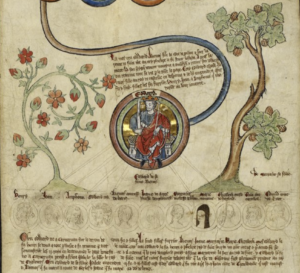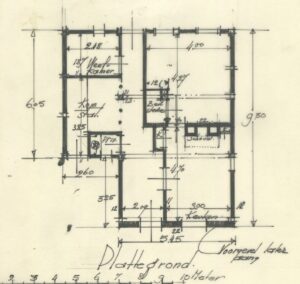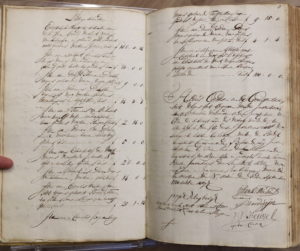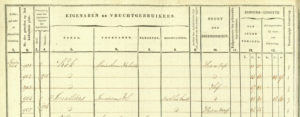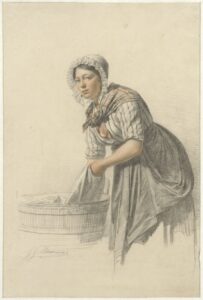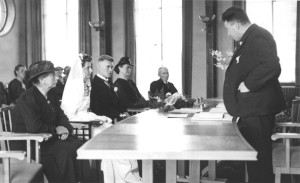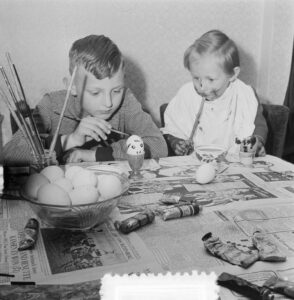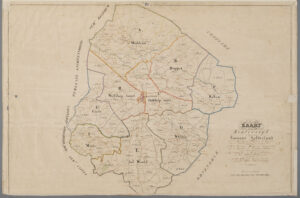Afstamming means descent. For example, I am trying to prove my afstamming from Eleanor of Aquitaine. The word afstamming is used for biological or legal descent. Like in English, the type of descent is often not made explicit. … [Read more...]
Dutch term – Plattegrond
A plattegrond is a plan or map. You can often find plattegronden of a house or larger areas in image collections of archives or the Rijksdienst voor het Cultureel Erfgoed (Culturel Heritage Service). I am currently doing a House History module at the university of Dundee, for which I am studying the history of a house in Bredevoort. As part of the research I found a plattegrond of the house in the collection of the Rijksdienst voor het Cultureel Erfgoed. This plan showed the situation in … [Read more...]
Dutch term – Boedelhouder
A boedelhouder literally is an estate keeper; the person who keeps possession of the estate of a deceased person until the estate is settled and divided. If the deceased was married, the boedelhouder would typically be the surviving spouse. … [Read more...]
Dutch term – Oorspronkelijke Aanwijzende Tafel
An Oorspronkelijke Aanwijzende Tafel or Original Indicator Table is a ledger of the cadastral administration. It was created in 1832 to show the owners of the plots at that time, when the cadastral administration was introduced. It is organized by municipality and section, and lists all the property owners in that section, or order of plot number. It is commonly abbrevated as OAT. See Cadastre - Original Indicator Table for more information about this source and how to use it. … [Read more...]
Dutch term – Muuranker
A muuranker [literally: wall anchor] is a wall tie, a piece of iron that is used to secure the outer wall to the timber frame of a building. If you are visiting a town where your ancestors lived, either in person or on Google Streetview, and see wall ties, you know it's an older house (say, before 1850). Some houses with wall anchors have timber frames that go back to the medieval period, when the frames would be filled with wattle and daub but have since been replaced with … [Read more...]
Dutch term – Mangelhoudster
A reader asked me about the term mangelhoudster. It literally means "keeper of a mangle." The mangle would be a dvice to put laundry through to dry and flatten it. The occupation is mainly found in and around Amsterdam. It could be that the mangelhoudster owned a mangle that others could use for a fee, or that she was a laundress herself. I have tried to find more documentation about the occupation but did not find much. An entry in the J.B. Glasbergen's Beroepsnamenboek [occupation's book], … [Read more...]
Dutch term – NSB-er
An NSB-er was a member of the Nationaal Socialistische Beweging [Nationalist Socialist Movement] in the Netherlands before and during World War II. The NSB was the party that welcomed the German occupation and collaborated with the nazis. During World War II, NSB membership was a requirement for many public offices, including being appointed as mayor. After the war, NSB members were arrested and investigated for collaboration. See the article Finding Collaborators in World War II for more … [Read more...]
Dutch term – Echtgenoot/Echtgenote
An echtgenoot is a male spouse. The female equivalent is echtgenote. You may encounter the term in death records, where someone is listed as the echtgenoot or echtgenote of someone else. The use of echtgenoot/echtgenote indicates that the spouse is currently living, otherwise the deceased would be listed as the weduwnaar [widower] or weduwe [widow]. … [Read more...]
Dutch term – Tweede Paasdag
Tweede Paasdag is second Easter day, the day after Easter (Eerste Paasdag/First Easter day). Both days are holidays in the Netherlands. … [Read more...]
Dutch term – Verzamelplan
A verzamelplan is a type of cadastral map created in 1832 to show the different sections within a cadastral municipality, and the maps/sheets within each section. See the article about Overview maps and minute maps for more information. … [Read more...]
